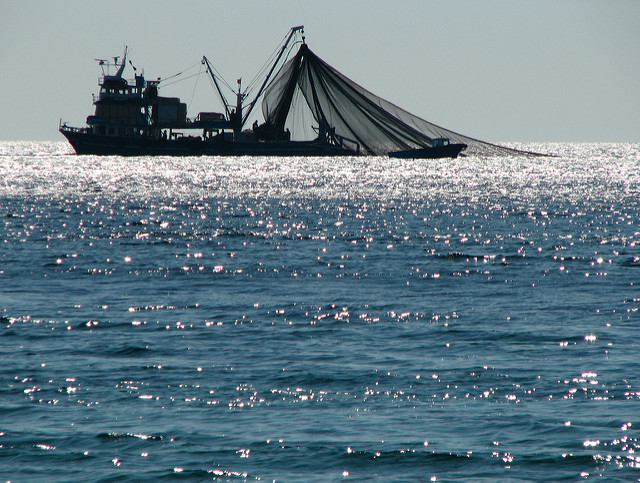“The ocean remains the least observed part of our planet” writes Douglas J. McCauley, in a recent Science Magazine article that outlines the issue of monitoring fishing boats in regions of the ocean that are difficult to observe.
McCauley, along with eight other authors, proposes measures that need to be taken to prevent illegal fishing and enhance regulation in these areas.
Illegal fishing is a huge problem, with an estimated $23 billion lost each year due its occurrence. It’s also dangerous. Just recently, Argentinian authorities fired shots at a Chinese vessel fishing in their waters. The boat sank yet the crew was saved.
The researchers propose the increased use of automatic ship identification systems (AIS). Initially conceived as a navigational safety aid to prevent ship collisions, AIS units can be used to publicly broadcast information about a ship’s identity, position, and course. Furthermore, with new mass detection abilities from satellites (S-AIS), they can observe vessels anywhere in the world.
“We demonstrate how AIS data can be used to empower and propel forward a new era of spatially ambitious marine governance and research,” McCauley writes.

He states that AIS is further needed due to the growth of marine protected areas (MPA’s), where, in many cases, all commercial fishing is banned yet illegal fishing still occurs.
These marine reserves currently make up ~4 percent of the ocean, but the UN Convention on Biological Diversity has set a target for ten percent by 2020, an ever increasing area to monitor. The island nation of Palau recently set aside an area of ocean the size of California.
In Kiribati, where another MPA the size of California exists, 97 percent of vessels that fished prior to the creation of the reserve used AIS once the reserve was initiated, displaying the effectiveness of the system, and how it could be successfully adapted to other regions.

S-AIS systems use satellite tracking systems to monitor a range of information about a vessels location, identity, and course.
However, in most areas, two major obstacles currently prevent AIS from being truly effective.
First, only a small fraction of fishing vessels are currently required to carry AIS; and secondly, some vessels who have AIS cheat by turning off their transponders, or modify their transponders to falsify the data.
While there are small steps that can be taken to better enforce AIS uptake (like analyzing ship data for blank spots, and adding “despoofing” algorithms) McCauley states that the best measure is through policy intervention.
He believes that the International Maritime Organization (IMO) should create stricter regulations by requiring all commercial fishing vessels greater than 15 meters – and all vessels that can catch greater than 100 gross tonnes – be equipped with publicly accessible, tamper-resistant AIS systems.
Yet today, each country has widely divergent regulation systems. While in 2015 the EU mandated that all fishing boats greater than 15 fifteen meters must have AIS. In Canada, fishing vessels are completely exempted from carrying the system.
In conclusion, McCauley writes:
“Unfortunately, current lack of legislative support for AIS has stunted this system into a service that best observes vessels that don’t mind being seen. Although the policy shifts we call for require brave revisions of the primacy of privacy on the oceans, failure to close loopholes will continue to foster illegal activities that steal income and biodiversity from developing nations, promote social injustice at sea, and undermine efforts to cooperatively manage the sustained vitality of our shared marine resources.”

